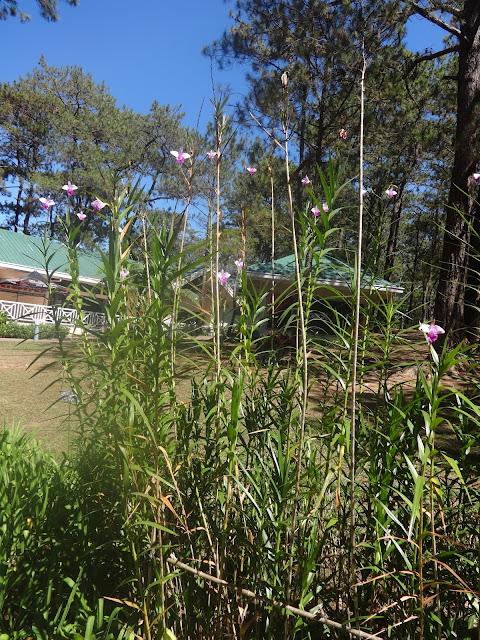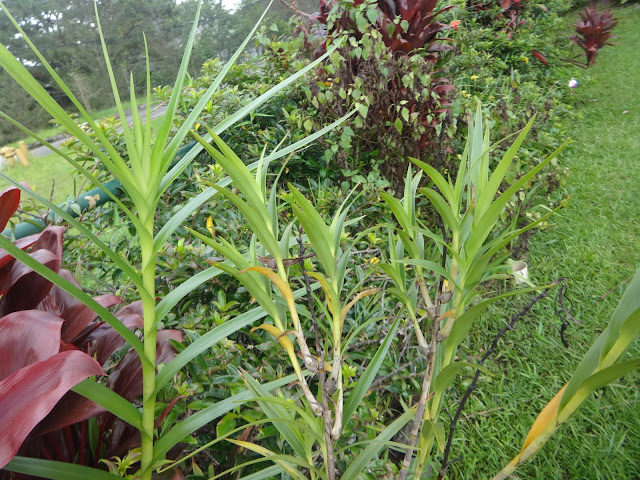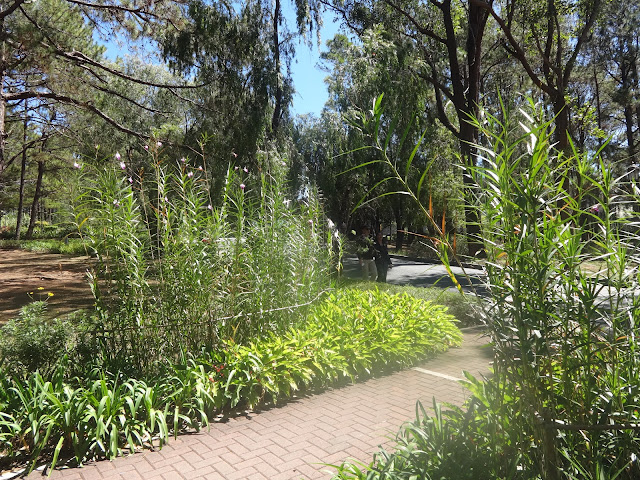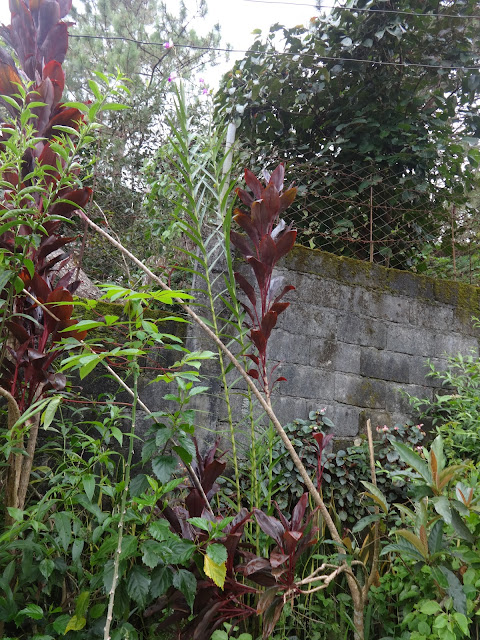PLANT PROFILE
Arundina graminifolia is species of terrestial tropical orchid, unique for its growth habit. It create a clump of single, tall, straight and unbranched stems, raised perpendicularly up with a beautiful orchid flowers on its tips. It is native to tropical and subtropical region of Asia, from Nepal, India, Sri Lanka, southern China, through Southeast Asia to Ryukyu Islands and Tahiti. And has been introduced in many tropical regions around the world, and naturalized in some places in Hawaii, Mexico, Panama, Columbia and South Africa.
Arundina is highly appreciated for its ornamental value and nowadays even in its native regions, it is more common view in garden cultivation than in wild state. Orchid hunters and medicinal plants gatherers have caused its wild population in many regions do decline to drastically low level. Because although nowadays this plant popularity is mainly about its charm, for many people it is still an important folk medicine.
Arundina medicinal properties are esspecially valued in Traditional Dai Medicine, and it is one of the most commonly used medicinal plants in TDM. Traditional Dai Medicine is a medicine system of Dai people, Tai-speaking ethnic groups that lives mainly in southern parts of Yunnan Province of China. This plant is also used as a herbal medicine in India, Bangladesh, Sri Lanka and Southeast Asian countries. And the plant material is obtaned sill mostly from wild state, but sometimes it is also planted in gardens along with other medicinal herbs.
While in the Western world nowadays orchids are seen almost entirely only as a beautiful flowering ornamentals. In rular areas of tropical and subtropical Asia and Oceania, but also tropical America and Africa, many orchids kinds like Arundina are still impotrant, commonly used folk medicine.
The name Orchid originated from the Greek word "orchis," which literally means testicles. It was allegedly Theophrastus who first used the word Orchis for name of a particular classified group of plants. The group of plants which flowers structure shows resamblance to look of testicles, and which roots was used as aphrodisiacs, antidepresants and general mind and body tonics. And although most of tropical orchids species differs a lot in their plant structure and growts habits. Many of it shares reputation of possesing the same healing properties as the mediterrean ones, although it was traditionally atributed to it by distant entirely unrelated ethnic cultures.
Arundina name derived from the Greek word 'arundo' which means reed, and the epithet graminifolia is a combination of words 'gramineus' and 'folius', and means grass-like leaves. But this species was first described in 1825 by David Don in Prodromus Florae Nepalensis as Bletia graminifolia. And only much later in 1910 it was transferred to genus Arundina, by Benedict Hochreutiner in the Bulletin of the New York Botanic Garden.
Arundina is such a unique kind of orchids, that the genus consist of only two species. Anrudina graminifolia flowers are variable in color and size but it is only recognized as a variations of this one species. But a dwarf form Arundina graminifolia var. revoluta that originates from Indochina and Borneo is such a distinctive plant that it was recently recognized as a seperate species named Arundina caespitosa Aver..
It was probably this fact of variations in flowers outlook, that lead to big number of scientific Arundina manes given by many different scientists. The names like Arundina affinis Griff.; Arundina bambusifolia [Roxb] Lindley; Arundina chinensis Blume; Arundina densa Lindley; Arundina densiflora Hook. f.; Arundina maculata J.J. Sm.; Arundina speciosa var. sarasinorum Schltr.; Arundina stenopetala Gagnep., are all currently considered to be just a synonyms for Arundina graminifolia. But it is quite likely that in the near future, some another Arundina variety will get separated into new recognised Arundina species, like it was with the case of Arundina caespitosa.
Bamboo Orchid is an english name for this plant, and it so perfectly describe the plants character, that it has became the most commonly used name for this plant worldwide. Arundina graminifolia is sometimes also called Chinese Arundina or Bird Orchid in english, and here are some of its vernacular names used in other languages : Wen Shang Hai (Dai name), Wah-Thit-Kwa (Myanmar), Ubi Bemban, Phanyar, Orkid Buluh (Malaysia), Hui Laki, Hui Bini, Anggeric Bam, Handjuwang Sapu (Indonesia), Ghasphul (Bangladesh), Ueang Pai, Khaem Dok Kho, Khaem Lueang. (Thailand), Euong Phai (Laos), Lan Say (Vietnam), Zhu Ye Lan, Changgan Lan, Shiyu Lan, Bai Yang Jie (China), Chiau a Hoe (Taiwan), Teet Pindalu (Nepal), Orchidee Bambou (France).
Arundina is a genus of evergreen, terrestial orchids, with very characteristic single, unbranched and usually absolutely straight stems, reaching upward at perfectly perpendicular maner, with flowers on its tips. The whole genus comprise of only two species, Arundina graminifolia with stems up to around 2m tall, and dwarf Arundina caespitosa which stems grow just up to around 50 cm height.
Bamboo Orchid grows naturally in forest edges, open scrub and riverbank tussock on mountain slopes up to 1700m and lowland rain forests.
It creates bamboo looking clumps colonies, spreading through its rhizomes, that grows new pseudobulbs, from each always only one stem grows. And so it can be easily propagated threw the clump divison. But it can be also propagated from seeds, stem cuttings, or young plantlets (keiki pseudobulbs) that sometimes it grows on its stems from nodes, usually near the top of the stem.
In recent years high demand for Arundina graminifolia on ornamental plants markets, due to its increasing popularity as a interesting element in tropical gardens landscaping. Has brought many big scale plant nurseries into tissue culture multiplication of this orchid. And different techniques of Arundina in vitro propagation was tested for best effectiveness, in agricultural academic centers.
Arundina likes tropical and subtropical climate, it is highly heat-resistant and can withstand only mild freezes. It is rather well resistant to diseases and pests, although fungal infections and infestations of mealy bugs can happen to it in excessively humid and poor air circulation conditions. And one of the main reasons for its popularity as a ornamental garden plant, is that this pretty, interrestingly unique looking plant is very easy to maintain. For its good look it is only needed to remove its old, dead stems every few months, or remove any weeds if such grows among Arundina stems in its clump area.
It loves strong sun and like sandy, loamy and rocky soils, well draind soils. And I even found one source stating that Arundina is also a lithophyte, which means that it can grow on a bare rock, taking all its nutrients only from scarce, accumulated in rock cracks, fallen leaves and dust. It withstand very well even long term droughts, but for good growth it require proper moisture.
Arundina graminifolia flowers are around 6 cm long, scented and short-lived compare to most of ornamental orchids. The single flower last just for about 4 days, but each stem tip has few (up to 10) flowers, that open all in straight successe manner. That makes the total lasting of flowers on each stem considerably long, and for that reason Arundina is sometimes used as a cutting flowers. Arundina caespitosa flowers are around 4 cm long and each of its stem has just 3 to 5 flowers on its tip.
A. graminifolia flowers can appear in a wide range of purple-pink shades, from dark violet with white and with orange middle, to pale pink and white with pale yellow middle. While A. caespitosa flowers are mainly very pale purple-pink with white, and often entirely white with just traces of yellow and purple in the middle. Except for color variations Arundina flowers has also variations in shape characteristics, as particular segments, petals can be more wide or more narow, shorter or longer and more or less curvy. And for that reason many plant nurseries propagate Arundina only in a vegetative way, to preserve original look of particular cultivars, that would be much likely lost in offspring from the seeds.
In Malaysia, Indonesia and the Philippines, Arundina flowers throughout whole year. But in other regions its flowering period vary a lot. For example, it is said to be during August-June in Tripura, India; April-September in Sikkim, India; June to November in Myanmar; August to March in Thailand.
All parts of the plant can be harvested throughout whole year. But the stems are best to be used for herbal teas after it is fully developed and hardened, and before it gets old and its leaves starts to turn yellow. Although I haven't found any information about commercial scale plantations of Arundina for harvesting for a plant material to be used as a herb. And it is gathered for medicinal purposes still from wild or grown in herbal gardens. From all the species of orchids used as healing herbs, Arundina is deffinitely the easiest one to grow and harvest. Producing big mass of stems with leaves, that are very easy to cut and dry.
Very few sources ever mention that flowers of Arundina are edible, but I was lucky do dig out this information. And like many other edible orchid flowers it has some health benefits (in Malaysia Arundina flowers are being eaten stir-fried, which is said to controll high blood pressure), and also much of decorating value (as used in this Hawaiian Pumpkin-Orchid Soup recipe). But I have to say that Arundina flowers are the most bitter flowers from all edible flowers that I had a chance to try, and therefore hard to enjoy.
Infusion from fresh chopped stems with leaves of Arundina, can be depend on amount used strongly or mildly bitter (it is the stems that gives bitterness, leaves are not bitter). But even when the infusion is made weak its bitterness is mild, but it is what I call a sharp bitterness. A kind of bitterness that some like me love, while others hate. But weather it is your taste or not, this bitterness is making Arundina tea a great tonic. Esspecially excellent to drink chilled with honey and a bit of lime, grapefruit or lemon, for cooling down during summer heat.
Arundina graminifolia belongs to those medicinal plants that are not known in Western Herbalism, and very little known in mainstreem of modern herbalism even in region of its origin. But it has a long tradition of medicinal use in every country where it is native (in Nepal, India, Sri Lanka, Bangladesh, China and all countries of Southeast Asia). And for some local communities, mostly in rural areas, this herb is still a very important traditional cure.
Although it is quite polular as an ornamental plant in whole tropical and subtropical Asia, as a medicinal herb its popularity is nowadays only seen among Dai people. In fact Arundina is one of the most important and most commonly used herbs in Traditional Dai Medicine. And as big majority of Dai people live in southern parts of Yunnan Province in China. It was Chinese scientists that conducted most of the modern research on pharmaceutical properties and chemical constituents of this plant.
In last two decades, due to raising wave of popularity of herbal therapies, also some scientists in other countries of the region, like Thailand, Malaysia and Indonesia, gave some attention to big medicinal potential of this herb. But total number of all research papers about Arundina's properties is still scarce up to date. Yet this combined with the information from many existing ethnobotanical surveys among many different Asian tribes. Is giving us pretty good understanding of how we can properly use this powerful traditional herbal medicine. Which I belive has a big potential to become much more than just a localy known remedy.
All parts of Bamboo Orchid can be used for medicinal purposes. The stems, rhizomes, roots and pseudobulbs has probably very close to identical healing values, and many authors write that simply the whole plant is used as a raw material. But in some sourcess particular parts are specified for specific use.
In Traditional Dai Medicine system A. graminifolia is highly reputed as a detoxification herb, and as such it is taken for all diseases before taking the medicine particular for the specific kind of disease. In TDM Arundina is also considered to be a herb that clears heat, remove blood stasis, remove wind and relieve pain. Said to be bitter, neutral in thermic nature and possess attribution of water element.
In Western Medicine terms Arundina's properties are described as : antioxidant, anti-inflammatory, antidote, antitumor, antibacterial, antiviral, antifungal, diuretic, anti-irritant, demulcent, emollient, antidepressant and immune regulating. Few compounds isolated from this plant showed anti-hemolytic action.
The whole plant or individual parts of A. graminifolia can be used chopped fresh or dried and crushed. It is usually taken orally in form of decoction (standard dose 15-30g) or infusion. It is traditionally used for treatment of :
- Poisoning. It is used by Dai people as a folk medicine for the treatment of food and drug intoxication. This herb is also used for venomous snake bites, decoction is drunk while poultice from mashed fresh pseudobulbs is applied on the bite wound.
Results of study on A. graminifolia extract, suggest that its detoxification mechanism could be related to its strong inhibition effect on lipid peroxidation, induced by chemical poison.
- Liver problems. In Traditional Dai Medicine and among other south Asian communities, Arundina is commonly used to detoxify liver and treat liver ailments like hepatitis and jaundice. This herb is one of principal components of the compound formulation called Baogan capsule which was used to treat liver damage and hepatic fibrosis in Dai hospital.
Two stilbenoid compounds isolated from A. graminifolia performed significant efficacy of anti-hepatic fibrosis activity against HSC-T6 in vitro.
- Infectious diseases. This herb is widely used to treat both bacterial and viral infections, mainly those of stomach, lungs or skin. Drinking Arundina decoctions is often traditionally prescribed for pulmonary tuberculosis, sore throat, carbuncle, and to prevent or stop wound infections.
From five flavonoid compounds isolated from whole plant of A. graminifolia, gramflavonoid A has showed moderate, and four other compounds weak anti HIV-1 activity. Results of other study showed that some phenolic compounds form the plant (graminiphenols), also displayed anti HIV-1 activity, and some of it was active against tobacco mosaic virus.
Two phenantherenes compounds isolated from Bamboo Orchid showed medium activity against Staphylococcus aureus, Bacillus subtilis and Escherichia coli. Study of bactericidal mechanisms observed rupture of cell wall and membrane and leakage of nucleoidal mass.
The ethyl acetate, ethanol and methanol extracts of
A. graminifolia, showed selective
inhibitory activity against the yeasts (Candida albicans, Candida parapsilosis, Issatchenkia orientalis
and Cryptococcus neoformans).
- Digestive tract ailments. Beside for being used to fight infections and inflammations of digestive system, A. graminifolia is also used to treat intestinal parasitic infestation. In Bangladesh the roots decoction is used to treat intestinal and biliary colic.
- Urinary track problems. Arundina is traditionally used for treatment of urinary tract ailments, mainly caused by infections and inflammations, like pyretic stranguria and urethritis.
- Pain. Decoction of the whole plant is traditionally used for pain relief, it is said to be helpfull in cases of abdominal pain, rheumatic and arthritic pain, joint pain, body aches.
- Diabetes. This herb is often traditionally taken as a treatment of diabetes.
- Rheumatism and arthritis. Decoctions of the plant are drunk as a remedy for rheumatic disorders, while paste made from rhizomes and stalk is applied topically on affected place.
- Tumors. In India and Indonesia, A. graminifolia is taken as a treatment for tumor. Results of few different studies has showed that some compounds isolated from the plant exhibit high or moderate cytotoxic activity against cancer cells lines such as HSY5Y, NB4, A549, PC3 and MCF7.
Decoctions from this herb are also used internally to treat : edema, beriberi, hernia, sores, hyperliposis, bone fractures and bruises. In Guangxi, China, A. graminifolia is allegedly used to treat mental illness, while Dai people use it to treat epilepsy.
In Sikkim state of India, powder of the rhizome is given to patients with bone fractures for faster healing. Malaysians eats flowers of Anrudina to controll high blood pressure.
In Indonesia, A. graminifolia root decoction is one of main ingredients in Jamu (traditional herbal drinks) formulas used as male tonic for sexual stamina, or to strenghten people to work.
In TDM system the whole plant decoction is taken for the deficiency of Qi and blood due to postpartum.
Externally fresh parts of Arundina graminifolia are used in such a ways :
- Scrapings of bulbous stem (might be mixed with coconut oil) are applied to heal cracks on skin and heels.
- Rhizome and stem paste is applied for ear pain and rheumatism.
- Juice extracted from the plant is used to treat ear pain.
- Paste from leaves and stems is applied on boils and carbuncles, once a day for four days.
Arundina graminifolia whole plant has a high content of flavonoids, polyphenols and stilbenoids, it is also rich in triterpenes, sterols, and contain phenanthrenes and diphenylethylenes, tannins, saponins, fluorenones and bibenzyls.
Here are some of constituents identified in the plant: gramflavonoid A, arundinan, arundinaol, medicarpin, butein, sulfuretin, quercetin and its glycosides, kaempfrol and its glycosides, gramniphenols C–G, blestriarene A , shacidin, densiflorol B, ephemerantho-quinone, coelonin, lusianthridin, heptacosane, arundiquinone, arundigramin, plus-catechin; 10 glucosyloxybenzyl-2-benzylmalate derivatives; C-4-alkylated deoxybenzoins; (2E)-, 2-propenoic acid; 3-(4-hydroxy-3-methoxyphenyl)-decosyl ester; p-hydroxybenzyl alcohol; triacontanol; p-hydroxybenzylethyl ether; 3-hydroxy-5-methoxybibenzyl; steppogenin-4'-O-β-D- glucoside.
Sources
'' Medicinal Orchids of Asia '' - Eng Soon Teoh, Springer 2016
'' Orchids in Traditional Medicine '' - Sourav Mukherjee, Notion Press 2020
Medicinal Orchids: An Overview - Amritpal Singh and Sanjiv Duggal
https://libproject.hkbu.edu.hk/was40/detail?lang=en&record=1&channelid=1288&searchword=alphabet%3DO
http://www.hawaii.edu/malamalama/2007/09/f6-garden.html
http://www.epharmacognosy.com/2020/04/arundina-graminifolia.html
https://www.phakhaolao.la/en/kb/0000100
https://www.jaycjayc.com/arundina-graminifolia-bamboo-orchid/#.YCFUMOgza01
http://bif.uohyd.ac.in/medserver/submission/display.php?accid=JQ94386649
https://www.nparks.gov.sg/florafaunaweb/flora/1/6/1691
https://www.natureinfo.com.bd/arundina-graminifolia-d-don-hochr/



































Nice and useful information. Thank you
ReplyDeleteVery interesting and beautiful post about . Thanks for sharing. Check out latest collection of plants and trees at Greenhills farm nursery.
ReplyDeleteHi Adam! Thanks for the post rich in information. Found everything I was looking for here. I have bamboo orchids in my yard and love them because they are so beautiful and really easy to care.I found the soup recipe precious, I love these culture/ethnic specific tastes and knowledges, they are so valuable. I will use the flowers in my yard as food decorations. Greetings from Brazil!
ReplyDeleteThis comment has been removed by the author.
ReplyDeleteI’ve been loving your site for sometime now . Ethnobotany and Phytochemistry is right up my alley . You are a priceless treasure my dear . Of all I’ve learned from you is amazing . I’d like to shake your hand in appreciation, although your owed much more for the information you’ve shared . If the world only knew of all of what’s out there . I’ll never understand evolutionist . For surely there was a creator to have created such wonderful treasures . How could all this come from nothing . Thank you for all your research you’ve shared with the world . Much Love from the Island of Oahu 🌸.
ReplyDeleteThank you for so much appreciation. It really motivates me to spend more time on writing, despite that I struggle to find free time. I hope to finish new article soon, as I already done full research on culinary, medicinal and other of many uses of Opuntia. Much Love from Poland
Delete